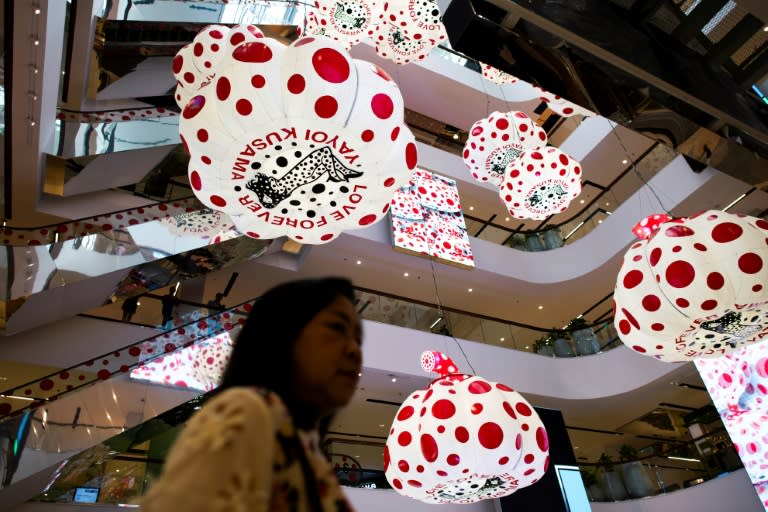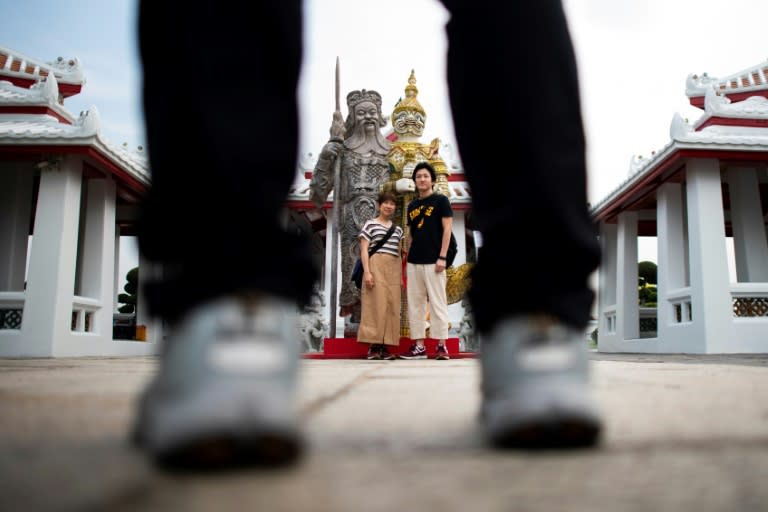'Venice of the East' plays host to first Bangkok Art Biennale
More than 100,000 small white porcelain skulls cover a walkway at a temple in the Thai capital, an evocative installation on mortality featured in the first-ever Bangkok Art Biennale. "In Buddhism, we believe that death is around you -— any step could be your last," said Nino Sarabutra, whose work is one of dozens on display at the maiden event, which kicked off Friday. "And for this installation, I want to remind people that any step could be their last. If (they) want to leave something behind, they have to do it today." The city's venerated temples, heritage sites and high-end shopping centres are playing host to works from all over the world until February. Some 75 local and international artists are taking part, with Yayoi Kusama and Marina Abramovic among the high-profile names contributing. The decision to hold the star-studded biennale in the Southeast Asian city was announced at its more famous predecessor in Venice last year. "Bangkok has always been envisioned as the Venice of the east," artistic director Apinan Poshyananda told AFP Friday, alluding to the city's Chao Phraya river and old canals. "The idea to have a biennale is to ignite and create Bangkok to be not the world centre but at least one of the centres of art destinations," he said. The sites are spread out across the city at 20 different venues, with many hugging the river in the old part of town while others take on modern Bangkok's malls and central business district. Polka dot and pumpkin-shaped lanterns by Japan's Kusama hang between the floors of Central World, one of Bangkok's prime shopping destinations. Over at Wat Arun, tourists next to two large warrior-like figures with Chinese and Thai motifs. The fibreglass figures are joined together in an installation called 'Giant Twins' by Thai artist Komkrit Tepthian. Southeast Asian artists hailing from Indonesia, Singapore, Vietnam, Cambodia and the Philippines are involved, shining a spotlight on creative talent in the region and Thailand. Nino, whose skull creation is called "What will we leave behind?" said the Bangkok Art Biennale could make the world aware of the local art scene, while also making it more accessible by bringing it out of high-end galleries. "I think [the art biennale] is bringing the art closer to the people."





